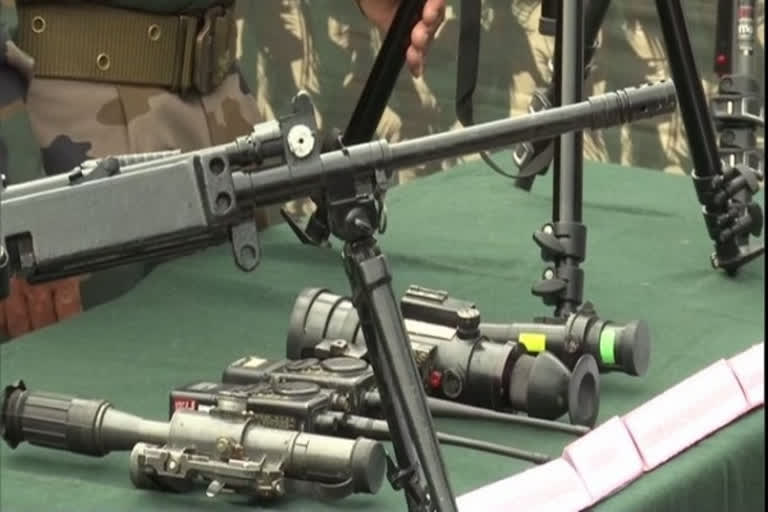New Delhi: Now an uncontested buzzword in the lexicon of India’s economic development programme, ‘Aatmanirbhar’ can be best summed as a judicious mixture of both self-reliance and self-sufficiency.
Having gained coinage during the scourge of the coronavirus pandemic in the infamous year 2020, it can perhaps be likened to the proverbial Phoenix ‘rising from the ashes’ as it originated from the engulfing tragedy in an effort to metamorphose into an opportunity.
And nowhere does it fit in best as in the defence sector.
Read: J-20 will corner most of China’s future defence spend
According to the reputed Stockholm International Peace Research Institute (SIPRI), India is the world’s second biggest importer of weapons after Saudi Arabia—from major military platforms like the Rafale fighter to the basic infantry weapon. It is also the world’s third biggest spender on defence after the United States and China.
The reasons are not far to look, sandwiched as it is between China and Pakistan.
Not surprisingly, self-reliance and self-sufficiency in the defence sector is being acknowledged as the need of the hour.
And that is why, the capital procurement budget (or the buying of new equipment and platforms) in Budget 2021-22 has been compartmentalised into two divisions—domestic and foreign procurement, with about 63 per cent of the outlay or a huge Rs 70,221 crore being set aside for domestic defence procurement.
This is expected to have a multiplier effect on home-grown industries particularly on small and medium enterprises and start-ups and also gainfully employing a substantial chunk of the workforce.
Some Important Steps
Several other mega measures have been announced.
Framing up a ‘negative list’ banning the import of 101 important items related to defence and another list expected shortly so that local industry is forced to take up the manufacturing challenge within a timeframe. Defence Minister Rajnath Singh had tweeted: “The ‘embargoed items’ include high technology weapon systems like artillery guns, assault rifles, corvettes, sonar systems, and transport aircraft”.
The Rs 48,000 crore deal with Hindustan Aeronautics Limited (HAL) to make 83 indigenously designed and developed Light Combat Aircraft MK 1A Tejas aircraft with another one expected to be signed soon for Light Combat Helicopters.
A Rs 10,000 crore corpus fund for small and medium enterprises and start-ups besides framing of relaxed and easier rules for local business houses so as to encourage indigenous development and manufacture of defence equipment.
Read: BrahMos missiles' supply: India signs key pact with Philippines for sale of defence equipment
The setting up of eight advanced technology centres across India DRDO to carryout research activities in identified futuristic/new technology areas.
Encouraging foreign Original Equipment Manufacturers (OEMs) to set up manufacturing units in India, develop Joint Ventures with domestic defence sector.
Self reliance is an important theme in the Defence Production and Export Promotion Policy (DPEPP 2020) and Defence Acquisition Procedure 2020 (DAP).
Easier Said Than Done
The 'Aatmanirbhar’ model in defence is premised on an enhanced level of relationship between the defence ministry, the armed forces and the indigenous defence-based industries. At present, it is anything but that.
The seminal relationship between the defence industrial complex and the government like that in the United States or west Europe is sorely missing in India. And it will take time for that collaborative relationship to develop.
With India facing the prospect of a two-front war scenario and given the recent rising tension with China, many defence needs would be urgent. As indigenous industry would take at least a certain gestation period to develop, not to speak of the chances of success of the project, how immediate military needs would be met is an important question.
In the backdrop of the 'Aatmanirbhar’ model, government policy to raise FDI limits in defence manufacturing under the automatic route up to 74 percent (from 49 per cent) so as to encourage global military majors to invest in India may send confusing signals at best and lack of confidence at worst.
Read: Defence Ministry clears over Rs 6,000 cr Arjun Mark 1A tank for Army
Cutting-edge defence technology is guarded by a girdle of obstacles like the requirement of heavy investment, capital intensive process, high tech knowhow which translates into issues of intellectual property rights, Indian indigenous defence manufacturing sector would need much more than lip-service to take on the giants owned by state and non-state behemoths.
But at the same time, for a country whose defence exports have grown by about 700 per cent between 2015 and 2019, achieving 'Aatmanirbharta’ in defence is by no means an impossible feat, although it would be a Himalayan one at that.


